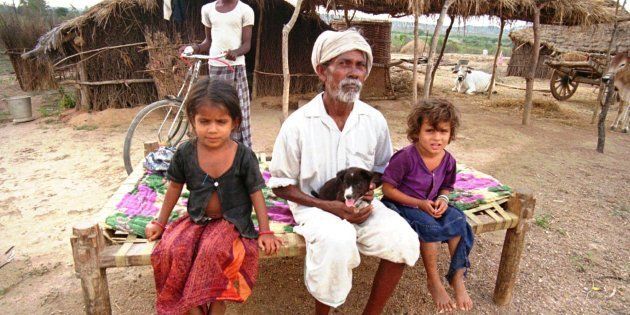
The share of Indians taking loans for productive purposes is declining, and short-term loans at crushing rates of interest dominate rural India.
New data on 'Household Indebtedness' from the National Sample Survey Office's 70th round, released late last week, shows that nearly one in three rural households and over one in five urban households is in debt. The incidence of indebtedness has grown much faster in rural India than in urban India. The southern states are significantly more indebted than the rest of the country; more than half of all households in Andhra Pradesh and Telangana are in debt, while nearly half of all households in Kerala and Karnataka have outstanding loans.
The average indebted rural household's debt is Rs 1.03 lakh, while urban households in debt have loans of over Rs 3.78 lakh outstanding. As people get richer, they are are more likely to be in debt, and the size of their loans grows too - among the richest 10% of rural Indians, the average outstanding loan of an indebted household is over Rs 12.5 lakh. On average, debt-to-asset ratios in India are still low (8.5% in rural areas and 14.8% in urban areas) compared to global averages.
Data on who gives these loans and on what terms indicates the crushing burden that indebted families are under. Institutional lending--loans by banks, for example--has plateaued over time in rural India and over a quarter of all debt in rural areas is still owned to money-lenders. Kerala is the only state in the country where institutional credit dominates.
Most loans in rural areas are for short and medium-terms and over 40% are on compound interest terms. But simple interest, too, the report notes, is not the same as 'low interest'; over half of all rural households with outstanding loans taken on simple interest terms are paying over 20% interest.
While debt is growing, the proportion of people who take loans for productive purposes is crashing, while the share of those who are having to take loans for household expenditure is skyrocketing.
The most common purpose of a loan is not for a productive purpose - like for business - but for "other household expenditure", an omnibus category that includes weddings and the purchase of household assets. Medical treatment is the next most common purpose of a loan in urban India, especially among the poorest, while loans for housing are most common among the richest. In rural India, loans for farming are the next most common, but for the poorest in rural areas as well, it is medical treatment that is pushing people into debt.
The data is from the NSSO's 2012-13 household survey and was conducted on a nationally representative sample of over 1 lakh households.